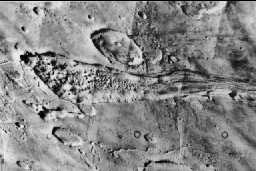This is an image showing a Martian outflow channel.
Click on image for full size
Image from: NASA
Martian Outflow Channels
The Martian surface exhibits a large number of large, tear-drop shaped outflow channels such as the one shown in this image. Most of these are found on the slopes of the Martian volcanoes. They seem to start from a hole in the ground, and quickly develop their mature form, as if whatever came out of the ground came out full steam. An examination of their structure helps scientists estimate the rate at which the fluid came out, or the channels "capacity". The channels are typically 10 m to 100 m deep (about the depth of a football field), 40 km across, and filled with rubble. Mars Pathfinder landed on a channel such as this called Ares Vallis.
The most plausible explanation for these is that they are eruptions of ground water. There is no water left in these channels today.
You might also be interested in:

The largest volcano in the solar system is Olympus Mons, shown in the image to the left. Olympus Mons is a Martian shield volcano. The altitude of Olympus Mons is three times the altitude of the largest
...more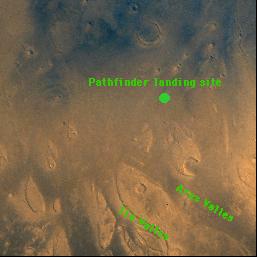
Mars Pathfinder touched down in what appeared to be the remnants of a catastrophic flood. Thus, scientists had the opportunity to study the remains of what is thought to be a surface created by flowing
...more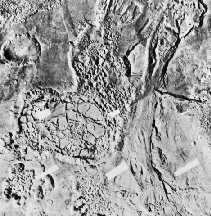
Separate from the Martian outflow channels, or the river valley networks, are large Martian lakes (600 km, or ~1000 miles across) which exhibit evidence of a periodic and catastrophic release of water
...more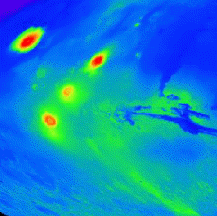
On this map of Mars, the lightly cratered Tharsis Ridge is shown, as well as the heavily cratered Martian highlands (near the bottom of the picture), and Valles Marineris to the right. The volcanoes are
...more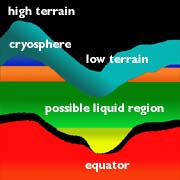
The unusual global geography of Mars helps to explain the fact that water has been drawn from the southern hemisphere to the northern hemisphere of the planet through all of Martian history (that is, from
...more
The Martian geography is one of high altitudes at high southern latitudes and low altitudes at low latitudes. The ground is less frozen at low latitudes because it is warmer and water can evaporate. Thus,
...more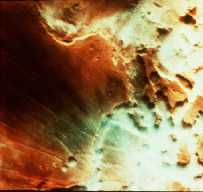
This is an image of fog in a Martian canyon. The presence of fog provides evidence of water, and a water cycle on Mars. More fog has been seen in images returned by Mars Global Surveyor of the south polar
...more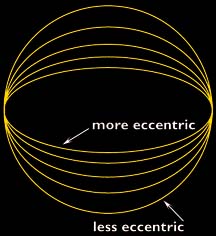
The Martian climate is more influenced by the shape of the Martian orbit than the climate of the Earth is influenced by the shape of the Earth's orbit. The orbit of Mars is more elliptical than that of
...more


